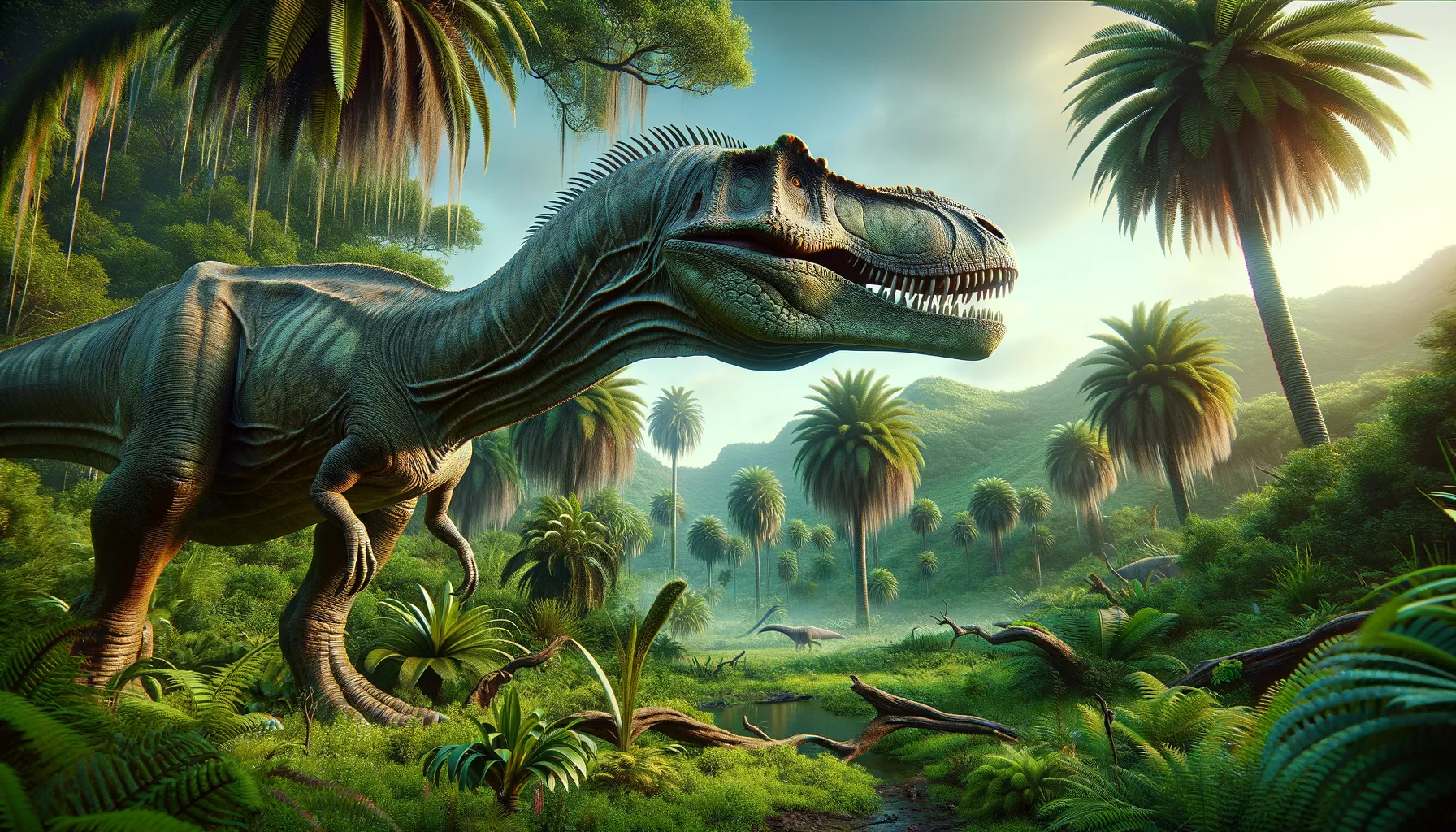
Archaeodontosaurus
Herbivorous giant of Madagascar's past.
Period
Jurassic
Length
Approximately 40 to 50 feet long.
Height
About 10 to 15 feet tall.
Weight
Estimated to weigh several tons.
Archaeodontosaurus was a large herbivorous dinosaur known for its distinct teeth, which were initially discovered in Madagascar. It lived during the Jurassic period and is related to modern birds and reptiles. Its large body and long neck suggest it fed on vegetation at various heights, possibly using its size for protection from predators. Though much about its lifestyle remains speculative, ongoing research continues to shed light on its ecological role.
Diet
Archaeodontosaurus was herbivorous, feeding primarily on plants. It likely consumed a variety of vegetation, including ferns and leaves from tall trees.
Hunting
As a herbivore, Archaeodontosaurus did not hunt. Instead, it foraged for food in its environment, relying on its height and reach to access a range of plant material.
Environmental challenges
Archaeodontosaurus faced the challenge of finding sufficient food in ever-changing ecosystems. Predators of the time would have also posed a threat, requiring constant vigilance. Large environmental changes, like shifts in climate or vegetation, would impact its food sources and habitat suitability.
Speed
Likely slow-moving due to its large size.
Lifespan
Possibly several decades, like modern reptiles.
First discovery
Discovered in Madagascar in the late 20th century.
Fun Facts
- Archaeodontosaurus was a dinosaur that lived during the Middle Jurassic period, roughly 167 million years ago.
- Its name means 'Ancient Tooth Lizard' because of its distinctive teeth.
- This dinosaur was a type of sauropod, which means it was a large, long-necked plant eater.
- Fossils of Archaeodontosaurus have been found in Madagascar, providing clues to the island's prehistoric life.
- Though not as commonly known as other dinosaurs, Archaeodontosaurus helps scientists understand the early evolution of sauropods.
- It is believed to have had a herbivorous diet, feeding on prehistoric plants like ferns and conifers.
- The discovery of Archaeodontosaurus fossils adds to the diversity of dinosaur fauna known from the Jurassic period.
Growth and Development
Young Archaeodontosaurus likely grew rapidly, as seen in many large dinosaur species. Its growth would have been influenced by factors such as food availability and environmental conditions. These dinosaurs may have reached full size relatively quickly, allowing better defense against predators.
Habitat
Archaeodontosaurus lived in what is now Madagascar, an area rich in diverse plant life. The region provided a lush habitat with abundant resources to sustain large herbivorous dinosaurs. Varied landscapes, including forested areas and open plains, offered food and shelter options.
Interaction with other species
Archaeodontosaurus likely interacted with a variety of other dinosaur species, both herbivores and carnivores. Its sheer size may have deterred some predators but not all. These interactions would have included competition for resources and confrontations for survival.
Natural lifespan
Its natural lifespan could have spanned several decades.
Reproduction
Like many dinosaurs, Archaeodontosaurus likely laid eggs. It is possible that it nested in safe areas to protect its young from predators. Parental care strategies remain unknown but may have included guarding nests.
Social behaviour
Archaeodontosaurus may have lived in herds, a behavior common among large herbivores. Such social structures would have provided protection against predators. Herding also facilitated efficient foraging and migration to new feeding areas.
Fossil locations
Fossils of Archaeodontosaurus have been primarily found in Madagascar. These discoveries help paleontologists understand its existence and environment. The fossils are key to reconstructing the prehistoric ecosystems of that region.
